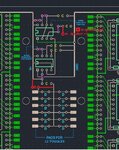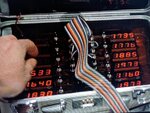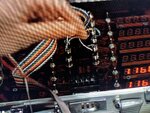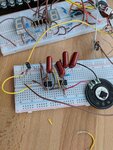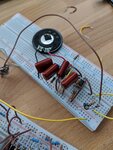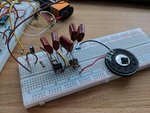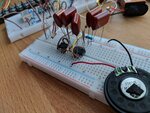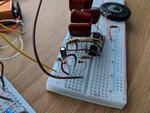skarkowtsky
Advanced Member level 4

No offense taken! The manner in which I'm doing things just shows my inexperience, haha. Thankfully, I'm on the home stretch and once the 555 circuit is corrected, the board is finished. Then I can spend a month populating it with components and move into case fabrication. Still, its been super educational for me to do all this longhand (and I wasn't frustrated with the process at all). It's been really fun. I enjoy designing the circuits. Yes, thankfully, I'm using templates for major components. Vias for resistors are done manually so I can tighten up the spacing where needed.
So far, everything is made in ExpressPCB, and the test board I had made last month looks great. I design it, submit it, they fabricate and ship. I will add the contact points for the speaker. For the speaker: one lead goes to capacitor from pin 3 of second 555, the other goes to ground?
So, a second resistor is added BEFORE the capacitor coming from the diodes? Leave the existing resistor (before pin 2 of the 555) in place?
Can you recommend a way to replace the central trace with something better for the switches? I was thinking of just running them all independently to a new central point: a large pad, then going from the pad to pin 2 with the resistors/capacitor. Is that better?
Thanks again everyone,
John
So far, everything is made in ExpressPCB, and the test board I had made last month looks great. I design it, submit it, they fabricate and ship. I will add the contact points for the speaker. For the speaker: one lead goes to capacitor from pin 3 of second 555, the other goes to ground?
So, a second resistor is added BEFORE the capacitor coming from the diodes? Leave the existing resistor (before pin 2 of the 555) in place?
Can you recommend a way to replace the central trace with something better for the switches? I was thinking of just running them all independently to a new central point: a large pad, then going from the pad to pin 2 with the resistors/capacitor. Is that better?
Thanks again everyone,
John
Last edited:

